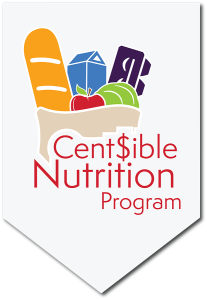The early winter weather much of Wyoming experienced this week may have left you with way more veggies than you know what to do with. Rather than frantically try to use them all now, think about preserving your harvest. There are several ways to do it so you can enjoy your garden harvest all winter long!
Freezing
Freezing is one of the easiest and quickest methods to store food. Generally, vegetables need to be blanched, or cooked briefly in hot water, before freezing. Some vegetables, like tomatoes, can be roasted in the oven before freezing, or tuned into sauce.
Foods must be frozen at 0° F or below to prevent spoilage. Freezing helps vegetables retain nutrients, color, flavor, and texture that is closest to fresh vegetables.
Learn how
Preserving Food in Wyoming (University of Wyoming Extension)- start on page 89
Preserving Food: Freezing Vegetables (University of Georgia Cooperative Extension)
Dehydration
Dehydration is another way to preserve food that requires little equipment. However, dehydration tends to take a lot of time and is best for making food smaller so it can be easily stored or for taking on trips. Not all foods are good for this method, such as high moisture foods. Dehydrated foods make good snacks or can be restored to their original plumpness by adding water.
Learn how
Rev up nutrition, slash food costs by preserving local food (University of Wyoming Extension)
Dehydrating Food – Video (University of Wyoming Extension)
Canning
Canning requires proper equipment but once purchased, it can be used each year and you may only need to replace jars, lids, or rings as needed. To safely can, you need a heat source, knowledge of temperatures, and proper processing methods to prevent spoilage or risk of food poisoning. Learn more through the resources below or contact your local Extension office for more information. Your canned foods can be stored up to a year and do not require refrigeration.
Learn how
Rev up nutrition, slash food costs by preserving local food (University of Wyoming Extension)
Safe food preservation keeps from getting home canners into a pickle (University of Wyoming Extension)
Introduction to Food Canning – Video (University of Wyoming Extension)
Low Acid & High Acid Foods – Video (University of Wyoming Extension)
Storage
With some work, some crops can be stored without freezing, dehydrating, or canning. Root vegetables, like carrots, potatoes and onions, can be stored up to six months. Select only the best condition vegetables for food storage. Cut off the tops and about ½ inch of the stems to prepare them for storage. Leave them in the sun for a bit after harvest so the tiny roots dry out, the vegetables go dormant, and dirt falls off prior to storage. Maintaining a constant cool temperature during storage, in a low light, humid environment is important.
Learn how
Simple steps when storing root vegetables lead to great tasting food months from now (University of Wyoming Extension)
Rediscover your roots (University of Wyoming Extension)
Happy gardening and preserving!
Information summarized from UW Extension publications by Katie Shockley, Writer/Editor, University of Wyoming Extension Communications & Technology.
The early winter weather much of Wyoming experienced this week may have left you with way more veggies than you know what to do with. Rather than frantically try to use them all now, think about preserving your harvest. There are several ways to do it so you can enjoy your garden harvest all winter long!
Freezing
Freezing is one of the easiest and quickest methods to store food. Generally, vegetables need to be blanched, or cooked briefly in hot water, before freezing. Some vegetables, like tomatoes, can be roasted in the oven before freezing, or tuned into sauce.
Foods must be frozen at 0° F or below to prevent spoilage. Freezing helps vegetables retain nutrients, color, flavor, and texture that is closest to fresh vegetables.
Learn how
Preserving Food in Wyoming (University of Wyoming Extension)- start on page 89
Preserving Food: Freezing Vegetables (University of Georgia Cooperative Extension)
Dehydration
Dehydration is another way to preserve food that requires little equipment. However, dehydration tends to take a lot of time and is best for making food smaller so it can be easily stored or for taking on trips. Not all foods are good for this method, such as high moisture foods. Dehydrated foods make good snacks or can be restored to their original plumpness by adding water.
Learn how
Rev up nutrition, slash food costs by preserving local food (University of Wyoming Extension)
Dehydrating Food – Video (University of Wyoming Extension)
Canning
Canning requires proper equipment but once purchased, it can be used each year and you may only need to replace jars, lids, or rings as needed. To safely can, you need a heat source, knowledge of temperatures, and proper processing methods to prevent spoilage or risk of food poisoning. Learn more through the resources below or contact your local Extension office for more information. Your canned foods can be stored up to a year and do not require refrigeration.
Learn how
Rev up nutrition, slash food costs by preserving local food (University of Wyoming Extension)
Safe food preservation keeps from getting home canners into a pickle (University of Wyoming Extension)
Introduction to Food Canning – Video (University of Wyoming Extension)
Low Acid & High Acid Foods – Video (University of Wyoming Extension)
Storage
With some work, some crops can be stored without freezing, dehydrating, or canning. Root vegetables, like carrots, potatoes and onions, can be stored up to six months. Select only the best condition vegetables for food storage. Cut off the tops and about ½ inch of the stems to prepare them for storage. Leave them in the sun for a bit after harvest so the tiny roots dry out, the vegetables go dormant, and dirt falls off prior to storage. Maintaining a constant cool temperature during storage, in a low light, humid environment is important.
Learn how
Simple steps when storing root vegetables lead to great tasting food months from now (University of Wyoming Extension)
Rediscover your roots (University of Wyoming Extension)
Happy gardening and preserving!
Information summarized from UW Extension publications by Katie Shockley, Writer/Editor, University of Wyoming Extension Communications & Technology


